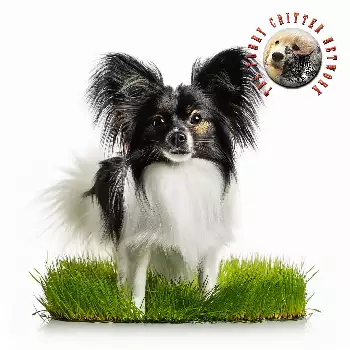American Kennel Club (AKC)
The AKC standard describes the Squirrel Spaniel as a small, friendly, elegant toy dog with a fine-boned structure, light and dainty in movement. The characteristic feature is the large, well-fringed butterfly ears. The body must be slightly longer than tall with a fine-boned structure. The coat is abundant, long, fine, silky, and flowing. The head is small with a well-defined stop, eyes dark and round, and ears large with rounded tips. Height at the withers should be eight to eleven inches. Weight is in proportion to height. The preferred weight ranges from five to ten pounds. Disqualifications include an all-white dog or a dog with no white coloring.
The standard emphasizes elegant carriage with a plumed tail arched over the body. The gait should be free, quick, easy, and graceful, not paddle-footed or stiff in hip movements. Angulation of the hindquarters should balance that of the forequarters. Temperament should be happy, alert, and friendly, never shy or aggressive.
Federation Cynologique Internationale (FCI)
The FCI standard classifies the Squirrel Spaniel under Group 9 (Companion and Toy Dogs), Section 9 (Continental Toy Spaniel). The standard states this is a small companion spaniel with luxurious coat and distinctively fringed ears. Overall appearance should be of a small dog with normal structure, harmonious proportions, and long silky coat. Two varieties exist based on ear carriage: erect ears or dropped ears, both equally valued.
The skull is slightly rounded between the ears with a well-pronounced furrow. The muzzle is shorter than the skull, thin and tapering but not excessively pointed. The stop is well defined. Height at the withers ranges from twenty to twenty-eight centimeters with a tolerance of one centimeter. Weight varies between two and five kilograms depending on the dog's size. The movement should be proud, free, and graceful. Any departure from the standard should be considered a fault and judged according to its severity.
United Kennel Club (UKC)
The UKC recognizes the Squirrel Spaniel in the Companion Dog Group. The standard describes them as small, friendly, elegant toy spaniels with fine bone and a dainty build. The distinctive butterfly ears are covered with long fringe, giving the impression of the spread wings of a butterfly. Another variety has dropped ears called Phalene. The overall appearance should be balanced and proportionate.
The ideal height ranges from eight to eleven inches at the withers, with weight proportionate to height. The coat is abundant, long, fine, silky, flowing, and straight with resilient quality. The color is always parti-color or white with patches of any color except liver. A clearly defined white blaze and noseband are preferred. Symmetrical facial markings are desirable. The temperament is happy, alert, and friendly. Any shyness or aggression is a serious fault.
Other Organizations
The Canadian Kennel Club follows a standard similar to the AKC, emphasizing the breed's toy spaniel characteristics and elegant appearance. The Kennel Club (UK) maintains a standard that aligns closely with FCI guidelines, recognizing both ear varieties. Various continental European kennel clubs follow FCI standards with minor regional variations in interpretation. The Australian National Kennel Council standard emphasizes soundness and typical toy spaniel characteristics. All major registries agree on the essential features: small size, elegant structure, abundant silky coat, and distinctive ear feathering. Minor differences exist in precise measurements and point allocations, but the overall breed type remains consistent across organizations.

